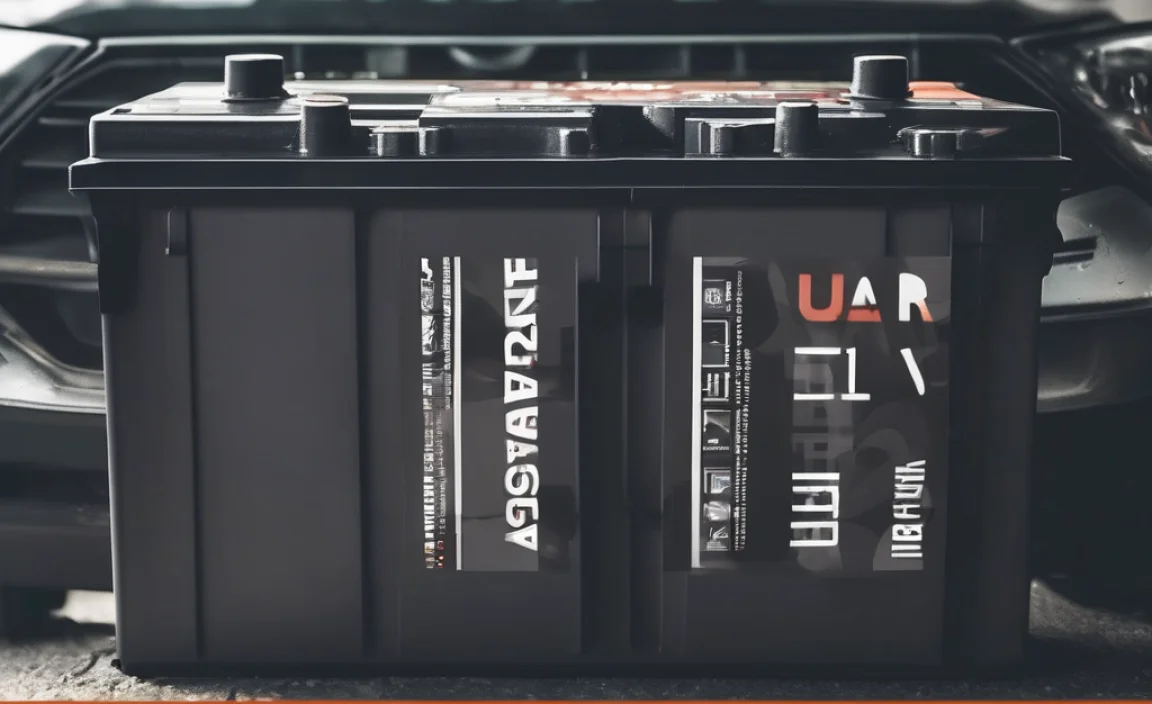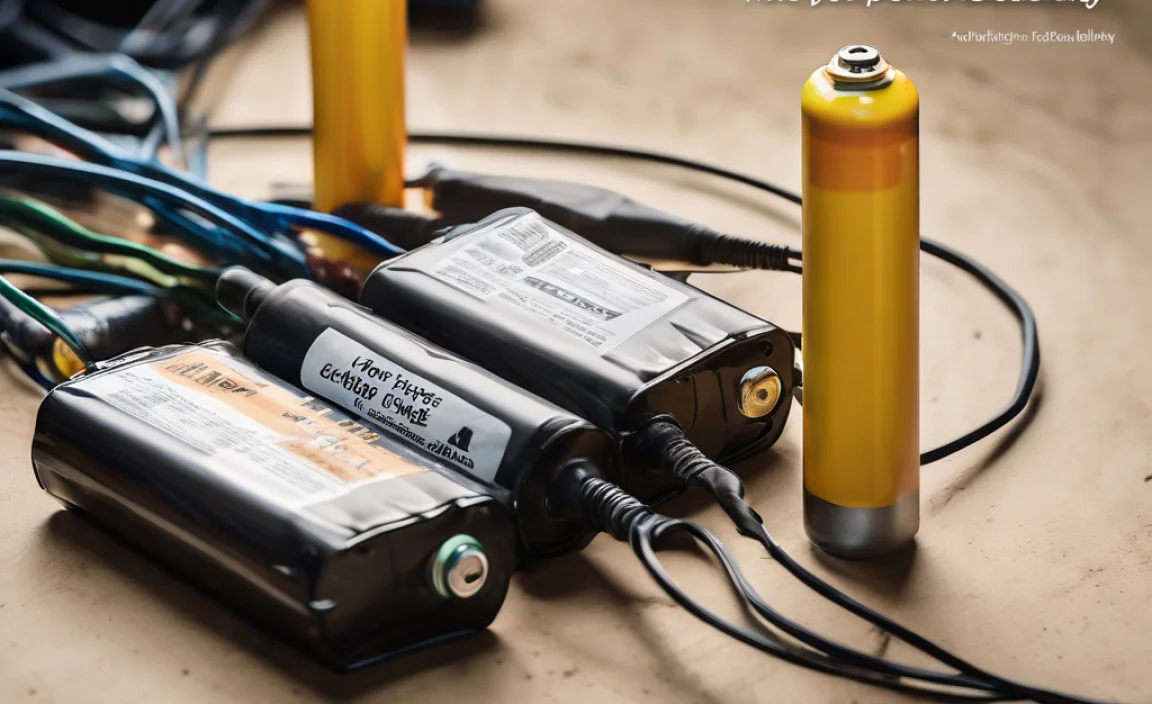Quick Summary
Testing your car battery is crucial for reliable starts and preventing breakdowns. A simple battery test helps identify issues early, saving you time and money. This guide will show you how to perform basic tests yourself or know what to expect at a mechanic’s shop.
Battery Test For Car: Your Essential Guide
Ever turned your car key and heard just a click, or worse, nothing at all? A dead car battery is one of the most common reasons vehicles won’t start. It’s frustrating, especially when you’re in a hurry. The good news is, you don’t need to be a master mechanic to understand your car’s battery health. Regular checks can save you from unexpected roadside trouble. This guide will break down how to test your car battery, what the results mean, and when it’s time for a replacement. We’ll cover simple at-home methods and what to look for if you visit a professional.
Why Testing Your Car Battery Matters
Your car battery is the powerhouse that starts your engine and keeps your car’s electronics running. Over time, batteries degrade, losing their ability to hold a charge. Extreme temperatures – both hot and cold – can speed up this process. A failing battery can cause more than just starting problems; it can lead to issues with your car’s lights, radio, and even other critical components.
Knowing when your battery needs attention is key. A simple test can give you peace of mind or alert you to an impending issue before it leaves you stranded. Think of it like checking the tire pressure on your car – a small habit that prevents bigger problems down the road.
Understanding Your Car Battery
Car batteries are typically lead-acid batteries. They store electrical energy to provide the initial “grunt” needed to crank the engine. Most modern cars use a 12-volt battery. This battery has a lifespan, usually between 3 to 5 years, but this can vary depending on driving habits, climate, and battery quality.
Key parts to know:
- Terminals: These are the metal posts where cables connect. They are usually marked with a “+” (positive) and “-” (negative) symbol. Keep these clean, as corrosion can affect performance.
- Casing: The outer shell that protects the internal components.
- Electrolyte: The liquid or gel inside that facilitates the chemical reaction needed for power.
Signs of a Weak or Failing Car Battery
Before you even think about testing, your car might be giving you clues:
- Slow Engine Crank: The engine turns over slower than usual when you try to start it.
- Dim Lights: Headlights or interior lights seem dimmer than normal, especially when the engine is off or at idle.
- Clicking Sound: You hear a rapid clicking noise when you turn the key, but the engine doesn’t start.
- Warning Light: The battery warning light on your dashboard illuminates.
- Old Age: If your battery is more than 3-4 years old, it’s wise to test it proactively.
- Swollen Battery Case: The battery casing looks puffy or distorted, which can be a sign of overheating or overcharging.
- Leaking Fluid: You see any liquid seeping from the battery.
How to Test Your Car Battery at Home
You can perform a few basic tests at home with minimal tools. These won’t be as precise as a professional test but can give you a good indication of your battery’s health.
1. The Headlight Test (A Quick Check)
This is a very basic test that can help you gauge if the battery has enough juice to power accessories. It’s best done when the engine is off and the car has been sitting for a while.
- Turn on your headlights.
- Observe their brightness.
- Now, start the engine.
- Watch the headlights again.
What to look for:
- If the headlights dim significantly when you start the engine, it means the battery is struggling to provide enough power, and the alternator is having to work hard.
- If the headlights are already dim with the engine off, your battery might be weak and unable to hold a charge properly.
This test isn’t a definitive diagnosis but a good indicator of a weak battery.
2. Using a Multimeter (More Accurate DIY Test)
A multimeter is a tool that measures voltage, current, and resistance. It’s a very useful device for any DIYer. You can buy one relatively cheaply at most auto parts stores or online.
What you’ll need:
- A digital multimeter
- Safety glasses
- Gloves
Steps:
- Ensure the engine is off and has been for at least a few hours (ideally overnight) so the battery has had time to rest and discharge any surface charge.
- Locate your car battery. It’s usually under the hood, but some vehicles have it in the trunk or under a seat.
- Set your multimeter to DC Voltage (VDC or V–). You’ll want to set it to a range that can measure 12 volts, like the 20V setting.
- Connect the multimeter probes to the battery terminals.
- Touch the red probe to the positive (+) terminal (usually covered by a red cap or marked with +).
- Touch the black probe to the negative (-) terminal (usually marked with -).
- Read the voltage displayed on the multimeter.
Interpreting the voltage readings:
These values are approximate and can vary slightly depending on temperature and battery condition. However, they give you a good idea:
| Voltage Reading (DC) | Battery Condition | Action Needed |
|---|---|---|
| 12.6V or higher | Fully Charged and Good | No immediate action needed. |
| 12.4V – 12.6V | Charged, but may need a top-up | Consider a slow charge if frequently driving short distances. |
| 12.0V – 12.4V | Partially Discharged / Weak | Needs charging. If it doesn’t hold charge after charging or reads low again, suspect a weak battery. |
| 11.9V or lower | Deeply Discharged / Badly Weakened | Likely needs replacement soon, or a thorough charge and re-test. May not recover. |
Important Safety Note: Be careful not to let the multimeter probes touch each other or any metal parts of the car while connected to the battery, as this can cause a short circuit and potentially damage the meter or the battery.
3. The Battery Load Tester (Best DIY Option, but requires a specific tool)
A battery load tester is a more advanced tool that simulates the electrical load placed on the battery when you start your car. This is a much more accurate way to assess a battery’s ability to deliver power under stress than a simple voltage test.
What you’ll need:
- A battery load tester (available at auto parts stores)
- Safety glasses
- Gloves
- A clean battery
Steps:
- Ensure the engine is off and the battery is cool (not recently driven).
- Connect the load tester clamps to the battery terminals. Red to positive (+), black to negative (-).
- Follow the load tester’s instructions. This usually involves pressing a button for about 10-15 seconds to draw a significant load from the battery.
- Read the tester’s indicator. Most have a needle or lights that indicate whether the battery passed or failed the test.
Interpreting load test results:
A load tester typically measures the battery’s voltage under load. A strong battery will maintain a voltage above a certain threshold (often around 9.6 volts at room temperature) during the 10-second test. If the voltage drops significantly lower, it indicates the battery is weak and likely needs to be replaced.
Where to find authoritative information: For more in-depth understanding of battery operation and testing, the U.S. Department of Energy’s Vehicle Technologies Office provides resources on vehicle battery technologies and maintenance.
Professional Car Battery Testing
Most auto parts stores and service centers offer free battery testing. This is often the easiest and most reliable option, especially if you’re not comfortable using a multimeter or load tester yourself.
What Happens During a Professional Test?
Mechanics and auto parts store technicians use specialized, professional-grade battery testers. These devices are typically more sophisticated than consumer-grade load testers and can often:
- Measure voltage.
- Perform a load test.
- Check the battery’s “cold-cranking amps” (CCA), which is a measure of its starting power in cold weather.
- Test the alternator’s charging output to ensure it’s working correctly.
- Measure battery resistance, which can indicate internal degradation.
These tests are usually quick, taking only a few minutes. They will give you a clear pass or fail, or provide specific readings and recommendations.
When to Get a Professional Test
- If you’re unsure about performing tests yourself.
- If your car exhibits multiple symptoms of a weak battery.
- If you plan to replace your battery and want to confirm it’s necessary.
- If your car failed to start and you suspect the battery is the culprit.
Car Battery Maintenance Tips
Taking care of your battery can extend its life:
- Keep Terminals Clean: Periodically check for corrosion (a white or bluish powdery substance) on the battery terminals. Clean them with a wire brush and a mixture of baking soda and water. Ensure no debris falls into the battery.
- Check for Loose Connections: Make sure the battery cables are tightly secured to the terminals.
- Protect from Extreme Temperatures: If possible, park your car in a garage or shaded area during extreme hot or cold weather.
- Avoid Deep Discharges: Don’t leave lights, radio, or accessories on with the engine off for extended periods.
- Regularly Drive: Short trips don’t always allow the alternator enough time to fully recharge the battery. If you only drive short distances, consider investing in a battery tender or trickle charger.
When to Replace Your Car Battery
Even with the best care, car batteries have a limited lifespan. You should consider replacing your battery if:
- It fails a load test.
- It’s over 3-5 years old and showing signs of weakness.
- It’s been deeply discharged multiple times.
- You notice any physical damage like swelling or leaking.
- You experience frequent starting issues despite other checks.
When replacing, it’s crucial to get a battery with the correct specifications for your vehicle, including the right size, voltage, and Cold Cranking Amps (CCA). Your car’s owner’s manual or an auto parts store can help you find the correct replacement.
FAQ: Your Car Battery Questions Answered
Q1: How often should I test my car battery?
It’s a good idea to test your car battery at least once a year, especially before the start of summer or winter, as extreme temperatures can affect battery performance. If your car is older than three years, testing it every six months is even better.
Q2: Can I just charge my car battery instead of replacing it?
A weak battery can often be charged. However, if a battery is old, damaged, or has issues with its internal plates, it may not hold a charge after being topped up. A load test is the best way to determine if charging is a temporary fix or if replacement is necessary.
Q3: What is “cold-cranking amps” (CCA)?
CCA is a rating that indicates how much power a battery can deliver in cold temperatures (0°F or -18°C) for 30 seconds while maintaining a voltage above 7.2 volts. Higher CCA ratings are generally better, especially if you live in a cold climate.
Q4: My car’s battery warning light is on. Does it always mean the battery is bad?
Not always! The battery warning light usually indicates a problem with the charging system, which includes the battery, alternator, or voltage regulator. It’s essential to have this checked immediately, as driving with a faulty charging system can lead to your car eventually shutting down.
Q5: How do I clean corrosion from my car battery terminals?
You can clean battery terminal corrosion by disconnecting the battery (always disconnect the negative (-) cable first, then the positive (+)). Mix a paste of baking soda and water, and use an old toothbrush or wire brush to scrub the terminals and cable connectors. Rinse with clean water and dry thoroughly before reconnecting (positive first, then negative).
Q6: Can jump-starting a car damage my battery?
Properly jump-starting a car typically won’t damage your battery. However, hooking up the cables incorrectly (positive to negative, or negative to a moving part instead of a ground) can cause sparks, damage to electronics, or even a battery explosion. Always follow the correct procedure when jump-starting.
Conclusion
Understanding and testing your car battery is a simple yet powerful step you can take to ensure your vehicle runs reliably. Whether you choose a quick headlight check, use a multimeter for a more precise reading, or visit a professional for a robust diagnostic, knowing your battery’s health is key to avoiding inconvenient breakdowns. Regular checks and basic maintenance can help extend your battery’s life, saving you money and keeping you on the road with confidence. Don’t wait for that dreaded click on a cold morning – take a proactive approach and test your car battery today!




